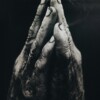
Small Screen, Big Picture: Television and Lived Religion
That a volume such as Small Screen, Big Picture: Television and Lived Religion has bee npublished attests to the fact that fictional television has evolved into a venue through which the public receives a great deal of its information about life and society. In the introduction, editor Diane Winston writes, “television today is essential to the production of American cultural narratives” (3). She also notes, “television converts social concerns, cultural conundrums, and metaphysical questions into stories that explore and even shape notions of identity and destiny” (2). Instead of just reflecting the real world, television has become a shaping force in society, telling its audience what is and is not real, good, and true. This is especially important to recognize as a growing number of programs contain significant exploration of religious topics.
The authors in this edited volume have contributed critiques of selected modern television dramas, focusing on how religion is portrayed both explicitly through the characters’ action and implicitly through thematic elements. They examine prime-time dramatic programs, primarily those on network channels, such as ABC, NBC, CBS, FOX, and the former WB, but also include a few shows distributed exclusively on cable or premium channels (TNT, the former Sci Fi Channel, HBO, and Showtime). While doctrinally- or theologically-based faith and practice are generally absent from the shows featured in the book, religiously tinged elements are ubiquitous. This allows the essays’ authors the opportunity to make their own conclusions about how lived religion is portrayed through the episodes, rather than summarizing what the writers have already conveyed through the script.
Winston’s volume contains three distinct sections. The first is titled “Old Wine in New Skins,” whose chapters focus on the characterization of religions. In the opening chapter, “True Believers and Atheists Need Not Apply,” S. Elizabeth Bird asserts that the majority of prime-time television is pro-religion, but not in favor of “overt or sectarian religiosity … or any religious practice that is perceived as extreme, fanatical, or hypocritical” (18). Additionally, she states that “TV drama is demonstrably hostile to atheism,” indicating the somewhere between no faith and overly zealous religious behavior is where the lived religion on television lands (18). Bird argues that this portrayal is consistent with the common lived religion of the United States today.
Following that chapter, which is focused primarily on Christianity, is a piece looking at morality more generally in Deadwood. This is succeeded by a commentary on race and religion in The Wire. The next chapter looks at Catholicism in The West Wing, and another on the effects of interfaith marriages on The O.C. and Everwood. The final portion of this section, “‘The Fire Next Time’: Sleeper Cell and Muslims on Television Post 9/11,” examines Islam in Oz and Sleeper Cell. This chapter is also of note, as Muslim characters on popular TV shows are rare in the first place, and shown in a positive manner even more infrequently. This piece provides an excellent introduction to their depiction on these shows that is telling of overall sentiments toward Muslim individuals in most media today.
The second section of the book, “Neither Male nor Female,” tackles themes associated with gender and religion. One chapter’s focus is on Xena Warrior Princess and its uniqueness in depicting a female savior. Another contribution is a very strong piece on the “Madonnas” and the “whores” of Saving Grace and Battlestar Galactica (261). The standout chapter though, is “‘You Know How It Is with Nuns…’: Religion and Television’s Sacred/Secular Fetuses, ”examining the depiction of abortion in primetime drama. Heather Hendershott describes articulately how “television experiences a religious awakening” when a female character discovers she is unexpectedly, and unwelcomingly, pregnant (201). She goes on to explore how the topic of abortion is portrayed on four shows: Maude, Everwood, House, M.D., and Battlestar Galactica. Through her descriptions and arguments, the reader is able to see how the rise of the Religious Right and the consistent objection to abortion by Catholics have significantly influenced how networks address this disputed issue.
Also in this section is the one odd chapter out of the volume. “Moralizing Whiteness in Joan of Arcadia” provides an excellent discourse on how race is often portrayed in main-stream media, and why the CBS program examined here in is better than most in this regard. Despite its engaging subject, there was very little, if any, analysis of the lived religion in the broadcast. Perhaps this shift in focus is due to the fact that Joan of Arcadia is one of the few shows featured in the book with outright religious themes, meaning the need to consider them was not as great as the other programs. However, the chapter ’s focus on racial analysis makes it an ill-fitting selection for this publication, whose other essays are concerned primarily with religion in television programming.
“Revelation” is the title of the final section, emphasizing thematic elements unique to some of the programs. One chapter examines “nuclear dread” and the influence of Japanese culture on Heroes (297). Another shows how the characters in Prison Break must have faith to successfully achieve their goal of escape. An especially good chapter in this section is “Who Am I? Where Am I Going?: Life, Death, and Religion in The Sopranos,” in which Adele Reinhartz skillfully extracts numerous instances of existential anxiety the characters face. As members of the mob, the men and women on the show regularly confront situations of meaning, morality, and mortality through the suspect activities essential to their profession. Several critics and commentators have come to see The Sopranos “as a commentary on contemporary American society” (396). If this is true, and Reinhartz’ analyses of the series are correct (including “faith and ethics have fallen by the wayside not only in practice but in theory as well”), a very grim, Godless picture of the nation is painted (397). The book concludes with a piece on religiosity in the shows of television writer and producer Tom Fontana’s thirty-year career.
Two themes present throughout the volume are important to mention here. The first is that of fan involvement in each of the shows. One cannot deny the devotion and enthusiasm of some of the followers, and several of the chapters pick up on their importance. The programs mentioned in the work have online forums that provide locations for the avid fans to not only discuss the plots, characters, and themes, but also post items such as fan fiction, in which the characters from the television programs are protagonists in stories of the writers’ imaginations.
However, more than just sharing comments and their own creative work, fans have also begun theorizing about the future direction and production of the show. In doing so, they have moved from spectators to contributors. In the chapter centered on Lost, the author writes that individuals “analyzed both the textual elements as well as the extratextual elements that go into the creation and sustainability of their favored program as a means of performing the role of a fan” (337). These fans are conscious that a television program is not only a story acted out on a screen, but also a business venture in which many players have stakes. The same chapter states that “fan awareness of their roles as fans, along with their awareness of the structure of the television industry… seemed to be a major theme” on these websites when the show’s ratings were dropping (336). Fans have drawn the connections among the shows’ plots, ratings, and production, and are investing their time and energy in discussion about these interactions. The author indicates that in the future, networks will likely increase their usage of these outlets as important resources for both feedback and fresh ideas.
The second consistent theme is the authors’ repetition of the importance of the events of September 11. Many of the series examined in this volume premiered after the year 2000, allowing the contributors to acknowledge the vast influence of the collapse of the Twin Towers on both the American public and the small screen programming it views. As is evident by the apocalyptic references in Battlestar Galactica and Heroes and the “Fight on Terror” elements of 24 and Sleeper Cell, the creators, writers, producers, and directors of prime-time dramas have taken notice of how the attack on American soil shook the population and its foundational faith in the nation’s invincibility. Additionally, how Muslim individuals are characterized negatively nearly every time a broadcast includes one, confirms the persisting stereotype of Muslims as terrorists created at least in part by 9/11. The occurrences of that day have continued to ripple out into American society, and the authors are quick to pick upon it.
Winston and the volume’s contributors provide superior in-depth surveys of lived religion in several of the most popular prime-time dramatic programs on the air today. One cannot deny the influence television has on the average person’s daily existence, and this work contains information that will cause viewers to take a second look at the messages about religion fed to us through the illuminated boxes in our homes.























